Nicholson Hall
Introduction
Text-to-speech Audio
Images
Nicholson Hall was built in 1890 and extensively renovated in 2005
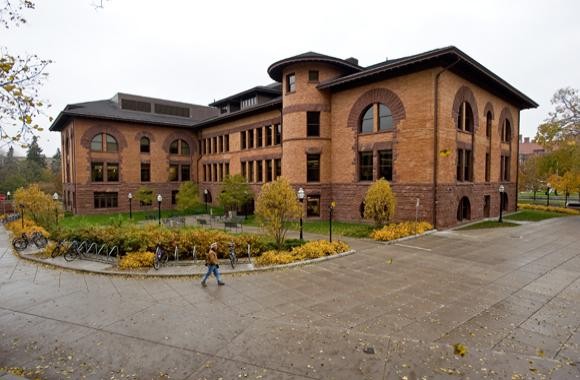
The facade of Nicholson Hall, facing Pillsbury Dr
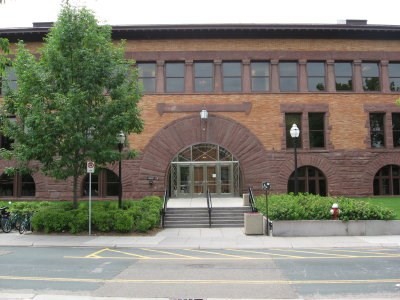
Nicholson Hall around 1908, when it was still the Chemical Laboratory Building
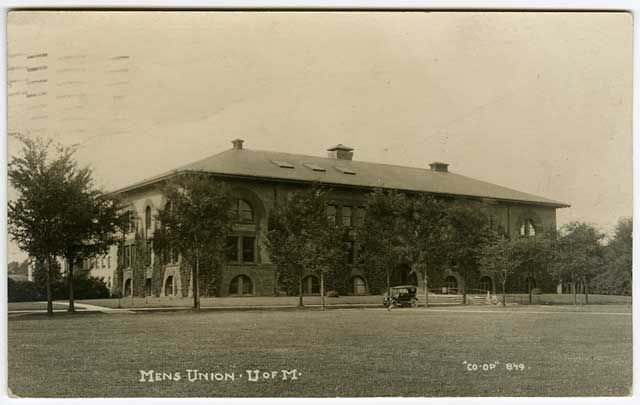
Nicholson Hall was home to the Minnesota Union and the Campus Club until they relocated in 1940
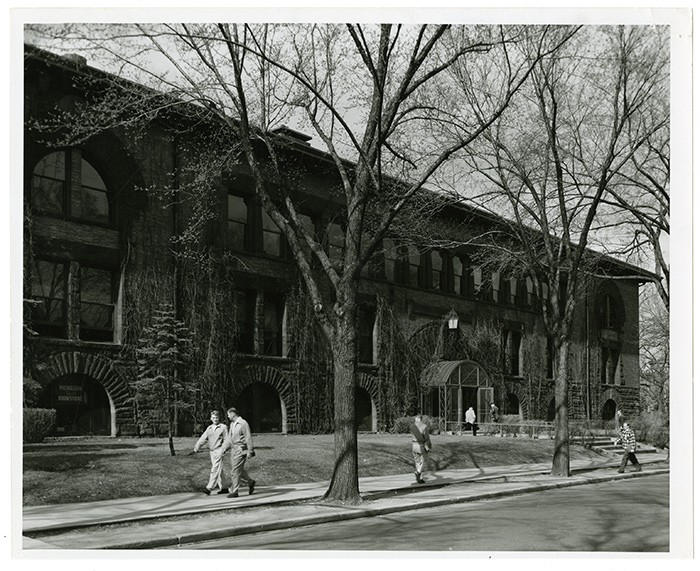
Edward E. Nicholson, former Chemistry professor and namesake of Nicholson Hall, was part of the renaming controversy
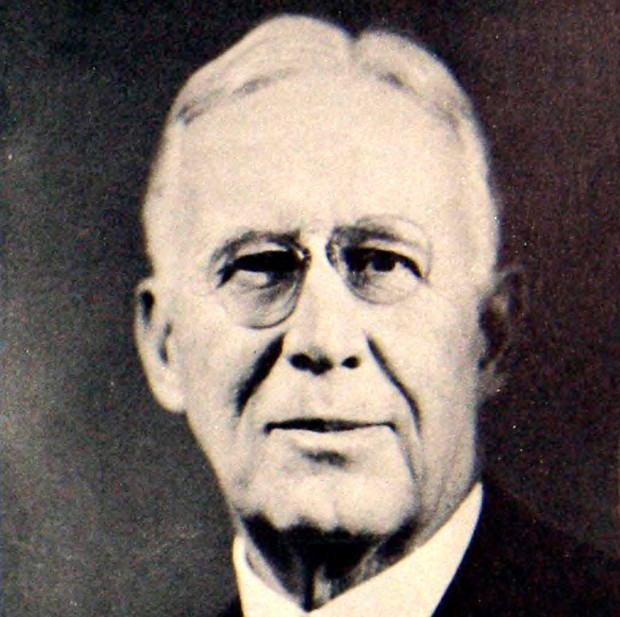
"A Campus Divided," the 2017 exhibit that revealed the discriminatory practices of Nicholson and others
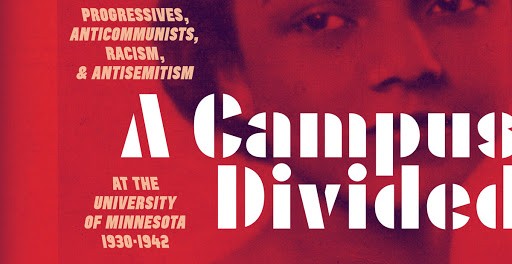
Backstory and Context
Text-to-speech Audio
In the University’s early years, the Department of Chemistry was a part of the Agricultural School, and located in the Agricultural Building. After that building burned down in 1888, a new Chemistry Laboratory Building was completed two years later. This building was officially credited to architect LeRoy Buffington, but, like Pillsbury Hall, was largely the work of his employee Harvey Ellis. Another of Ellis’s Richardsonian Romanesque designs, the building is made of a yellowish Roman brick and rusticated red sandstone. The original 1890 structure cost $81,500, and a 1902 renovation that added more chemistry labs (after the Physics Department moved into its own building) brought the total up to $90,000.
Chemistry became one of the most popular fields of study in the early 1900s, and the department underwent significant growth in this building. Dean George B. Frankforter led the department through this period, establishing the School of Chemistry as its own separate entity in 1904. As it expanded, however, it needed more space and newer facilities, and finally moved into the newly constructed Smith Hall in 1913. The following year, the Chemistry Laboratory Building became the new headquarters of the Minnesota Union, an all-male student club that was formed in 1908. The building was remodeled after the gentlemen’s clubs of the time, featuring a cafeteria along with smoking, billiard, and game rooms. After a new addition to the building in the 1920s, the Minnesota Union was joined by the Campus Club, an all-male faculty club.
The student and faculty clubs occupied the building until 1940, when they both moved into the brand new Coffman Memorial Union. During World War II, the former Chemistry building was used as a training facility for the U.S. Navy’s Machinist’s Mates. It was officially renamed Nicholson Hall in 1945, after Edward E. Nicholson, who was a former professor of Chemistry and the University’s first Dean of Student Affairs. After the war, Nicholson Hall was reorganized into traditional classrooms and offices that were used by various departments over the years. The building’s auditorium was also utilized as a screening space for the U Film Society.
Significant renovation and restoration of Nicholson Hall took place in 2005, as part of a greater University effort to preserve and repurpose its historic buildings. The $24 million project removed the auditorium and a wing of the building, added an outdoor courtyard, rebuilt the old turret that had been removed in the 1920s, and restored the art deco lobby. When it reopened in 2006, the updated Nicholson Hall became home to the Department of Cultural Studies and Comparative Literature, the Department of Classical and Near Eastern Studies, the Writing Center, and the University Honors Program. Since then, Nicholson Hall has been an integral part of the revitalized humanities hub in the Knoll area.
Controversy surfaced in 2017, when an exhibit entitled “A Campus Divided” revealed discriminatory policies and opinions held by former leaders of the University. Among those featured was Edward Nicholson, who was accused of conducting surveillance on students in the 1930s, particularly targeting Black, Jewish, and supposedly Communist students. A task force was formed to look into the allegations, and it determined that the buildings named after Nicholson and three others should be renamed. Despite this conclusion, the Board of Regents ultimately rejected the proposal in the spring of 2019, and Nicholson’s name remains on the building.
Sources
- State Historic Preservation Office Staff. National Register of Historic Places Inventory -- Nomination Form, National Park Service. August 23rd 1984. Accessed April 16th 2020. https://npgallery.nps.gov/NRHP/GetAsset/33466d89-64c2-4ea4-9bd8-1b3f574c3c96.
- Historic Nicholson Hall to Reopen on January 27, Wayback Machine. December 19th 2005. Accessed April 16th 2020. https://web.archive.org/web/20060916210507/https://www2.cla.umn.edu/news/for_media/press_release_archive/docs/Nicholson121905.pdf.
- MPR Office Staff. Kaler Backs Pulling Coffman, Other Names off U Buildings, MPR News. March 1st 2019. Accessed April 16th 2020. https://www.mprnews.org/story/2019/03/01/university-minnesota-race-building-name-changes-kaler.
- Regents Reject Proposal to Rename U of M Buildings, KSTP. May 21st 2019. Accessed April 16th 2020. https://kstp.com/news/university-minnesota-discussing-campus-building-name-changes/5331376/.
- History of Student Unions on Campus, University of Minnesota -- Student Unions & Activities . Accessed April 16th 2020. https://sua.umn.edu/about/history.
- History, University of Minnesota -- Department of Chemistry. Accessed April 16th 2020. https://chem.umn.edu/about-us/history.
- Brady, Tim. Room to Ruminate . Minnesota. Vol. 1 110, No. 3. Spring 2011. 34 - 37.
- "New Staff Appointments." The Interpreter (Minneapolis). Vol. 22, No. 2. January 1947.
- Pillsbury Hall Renovation -- Project History, University of Minnesota . Accessed April 16th 2020. https://cla.umn.edu/pillsbury-hall-renovation/project-history-0.
https://campusmaps.umn.edu/nicholson-hall
https://www.waymarking.com/waymarks/wm49KP_Nicholson_Hall_University_of_Minnesota_Old_Campus_Historic_District
https://www.pinterest.com/pin/310115124311086302/
https://sua.umn.edu/about/history/
https://www.twincities.com/2019/02/20/umn-task-force-remove-racist-mens-names-campus-buildings/
http://acampusdivided.umn.edu/
